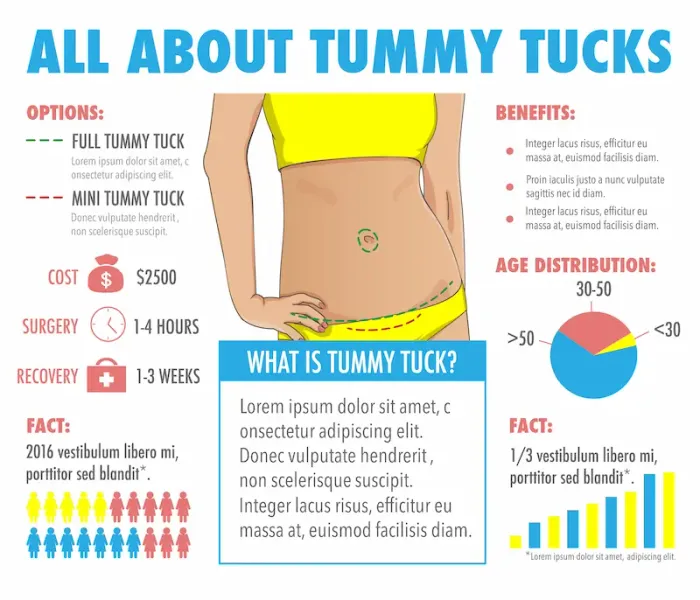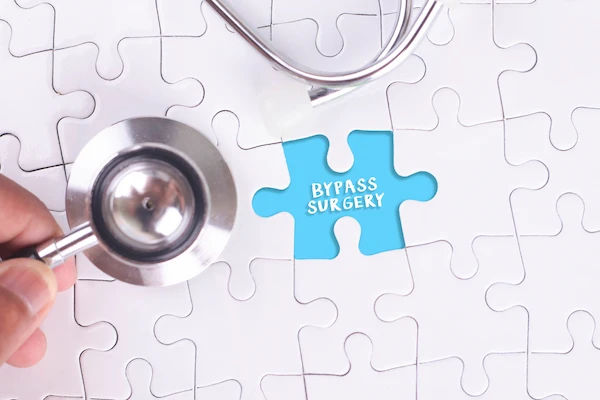Tucked Tummy: Exercises, Posture and More
Discover effective exercises, posture tips, and lifestyle strategies to achieve a tucked tummy and strengthen your core.

Written by Dr. J T Hema Pratima
Reviewed by Dr. Dhankecha Mayank Dineshbhai MBBS
Last updated on 3rd Oct, 2025

Introduction
Achieving a flatter, more "tucked" abdomen is a common fitness goal, but it's often misunderstood. Many people immediately think of endless crunches or drastic diets. However, a truly tucked tummy is the result of a strong, well-functioning core, good posture, and smart lifestyle habits, not just spot reduction. This guide moves beyond the myths to provide a holistic approach. We'll explore the key muscles involved, particularly your body's natural corset, and provide a step-by-step plan incorporating foundational exercises, posture correction, and dietary tips. Whether you're looking to enhance your appearance, improve your posture, or gain core strength for better overall health, this article will equip you with the knowledge and tools you need. Let's dive into the real secrets of how to tuck tummy effectively and sustainably.
Understanding Your Core: The Anatomy of a "Tuck"
Before you start any exercise regimen, it's crucial to understand what you're working with. The core is not just the "six-pack" muscles (rectus abdominis). It's a complex series of muscles that wrap around your entire torso, acting as a stabiliser for your entire body. The goal of a tuck tummy is primarily achieved by strengthening the deepest layer of these muscles.
The Transverse Abdominis: Your Natural Corset
The most important muscle for cinching your waist is the transverse abdominis (TVA). Think of it as your body's built-in corset. It wraps horizontally around your abdomen, from your spine to your midline. When you engage it correctly, it pulls your abdominal wall inward, creating a flatter appearance. A weak TVA can lead to a protruding stomach, even if you don't have a lot of body fat. Exercises like the "vacuum" (detailed later) are specifically designed to target and strengthen this crucial muscle, leading to a more tucked waist over time.
Why Posture Matters More Than You Think
Your posture has an immediate and dramatic effect on how your stomach appears. When you slouch, your organs push forward and your abdominal muscles relax, causing your belly to pooch out. Conversely, standing tall with your shoulders back and down engages your core and allows your abdomen to lie flat. Improving your posture for a flatter stomach is the quickest and easiest way to see a difference, no exercise required. It’s about working with gravity, not against it.
Consult a Physiotherapist for the best advice
The Foundational Five: Essential Exercises to Tuck Your Tummy
Forget a hundred crunches a day. The following exercises are designed to build functional core strength from the inside out, targeting the deep stabiliser muscles that truly create a tucked appearance.
1. The Vacuum Exercise: Activating Your Deep Core
This is the quintessential exercise for learning to engage the TVA.
How to do it: Kneel on all fours or lie on your back with knees bent. Exhale all the air out of your lungs. Then, without breathing in, pull your belly button up towards your spine as far as you can. Hold for 10-20 seconds while breathing shallowly, then release. Aim for 5-10 repetitions.
Unique Insight: Practice this while sitting at your desk or standing in a queue. It’s a subtle but powerful way to strengthen your core throughout the day.
2. The Dead Bug: Mastering Coordination and Stability
The Dead Bug teaches your core to stay braced while your arms and legs move, which is essential for spinal stability.
How to do it: Lie on your back with arms extended toward the ceiling and knees bent at a 90-degree angle (like a "bug" on its back). Slowly and simultaneously lower your right arm and left leg towards the floor, keeping your core tight and your lower back pressed into the ground. Return to the start and repeat with the opposite limbs.
3. The Plank: The Full-Body Core Strengthener
A properly executed plank engages the entire anterior core, including the TVA.
How to do it: Place your forearms on the ground with elbows aligned below your shoulders. Extend your legs back, resting on your toes. Your body should form a straight line from your head to your heels. Engage your glutes and core to prevent your hips from sagging. Hold for 20-60 seconds.
4. Bird-Dog: For Balance and a Stronger Back
This exercise improves stability and works the opposing muscles to your abs, your back extensors, which are vital for good posture.
How to do it: Start on all fours. Extend your right arm straight forward and your left leg straight back simultaneously. Keep your hips level and avoid rotating your torso. Hold for a few seconds, then return to the start and switch sides.
5. Glute Bridges: The Unsung Hero of Pelvic Alignment
Weak glutes can lead to an anterior pelvic tilt, where your pelvis tilts forward, making your lower belly protrude. Strengthening your glutes helps correct this alignment.
How to do it: Lie on your back with knees bent, feet flat on the floor. Drive through your heels to lift your hips towards the ceiling until your body forms a straight line from shoulders to knees. Squeeze your glutes at the top. Lower with control.
Beyond the Gym: Lifestyle Tweaks for a Flatter Stomach
Exercise is only one piece of the puzzle. These daily habits can make a significant difference in achieving a non-surgical tummy tuck effect.
The Power of Posture: Stand Tall, Look Slimmer Instantly
Make a conscious effort to check your posture throughout the day. Set a reminder on your phone or computer. When standing, imagine a string pulling the crown of your head towards the ceiling. When sitting, ensure your feet are flat on the floor and your back is supported. This simple habit can make you look inches slimmer immediately and strengthen your core over time.
Beat the Bloat: Dietary Adjustments for a Less Puffy Midsection
Sometimes, a protruding stomach is less about fat and more about temporary bloating. Common culprits include high-sodium foods, carbonated drinks, and foods that are difficult to digest for some individuals (like beans, lentils, and certain cruciferous vegetables). Keeping a food diary can help you identify your personal triggers. Staying hydrated is also key, as water helps flush excess sodium from your system. If you experience persistent, painful bloating that doesn't improve with dietary changes, it's wise to consult a doctor online with Apollo24|7 to rule out any underlying digestive issues.
What Not to Do: Common Myths About Tucking Your Tummy
Not all advice for a flat stomach is safe or effective; knowing what to avoid can save you from injury and frustration.
The Truth About Spot Reduction
It is a biological impossibility to "spot reduce" fat from only your abdomen. Doing endless ab exercises will strengthen the muscles underneath, but it will not burn the fat layer on top. Fat loss occurs systematically throughout the body through a consistent calorie deficit achieved by diet and full-body exercise.
Why Crunches Alone Aren't the Answer
While crunches target the superficial "six-pack" muscles, they do little for the deeper transverse abdominis. Over-relying on them can even lead to neck strain and reinforce poor posture if not done correctly. A balanced core routine that includes stabilisation exercises (like the Foundational Five) is far more effective.
Conclusion: Your Journey to a Stronger, More Confident You
Achieving a tucked tummy is a journey of building strength from the inside out. It's not about punitive measures but about understanding and working with your body's anatomy. By incorporating the foundational exercises that target your deep core, consciously improving your posture every day, and making smart nutritional choices to reduce belly bloating, you will see lasting results. Remember, the goal is not perfection but progress: a stronger core that supports you in every movement, improves your confidence, and enhances your overall well-being. Start with one exercise, focus on your posture for one hour, and build from there. Your stronger, more confident self is waiting.
Consult a Physiotherapist for the best advice
Consult a Physiotherapist for the best advice

Ms. Richa Sharma
Physiotherapist And Rehabilitation Specialist
12 Years • MPT,MIAP
Noida
Apollo Hospitals Sector 26, Noida
Mr. Suhail Quadir
Physiotherapist And Rehabilitation Specialist
6 Years • MPT
Delhi
A+ orthopaedic and sports medicine center, Delhi

Mr Avijit Das
Physiotherapist And Rehabilitation Specialist
7 Years • BPT, MPT (Sports)
Kolkata
PCRC PHYSIOCARE AND REHABILITATION CLINIC, Kolkata
(175+ Patients)

Mr. Soumen Mandal
Physiotherapist And Rehabilitation Specialist
26 Years • DPT, MPT
Kolkata
Re- Active Physiotherapy Clinic, Kolkata

Ms. Lakshmi Priya
Physiotherapist And Rehabilitation Specialist
10 Years • M.P.T,MIAP,IHFA [CAPES] Diploma In Football Medicine
Hyderabad
Apollo Medical Centre Kondapur, Hyderabad
Consult a Physiotherapist for the best advice

Ms. Richa Sharma
Physiotherapist And Rehabilitation Specialist
12 Years • MPT,MIAP
Noida
Apollo Hospitals Sector 26, Noida
Mr. Suhail Quadir
Physiotherapist And Rehabilitation Specialist
6 Years • MPT
Delhi
A+ orthopaedic and sports medicine center, Delhi

Mr Avijit Das
Physiotherapist And Rehabilitation Specialist
7 Years • BPT, MPT (Sports)
Kolkata
PCRC PHYSIOCARE AND REHABILITATION CLINIC, Kolkata
(175+ Patients)

Mr. Soumen Mandal
Physiotherapist And Rehabilitation Specialist
26 Years • DPT, MPT
Kolkata
Re- Active Physiotherapy Clinic, Kolkata

Ms. Lakshmi Priya
Physiotherapist And Rehabilitation Specialist
10 Years • M.P.T,MIAP,IHFA [CAPES] Diploma In Football Medicine
Hyderabad
Apollo Medical Centre Kondapur, Hyderabad
More articles from Obesity
Frequently Asked Questions
1. How long does it take to see results from these exercises?
While improved posture offers an instant visual difference, strengthening the deep core muscles takes consistent effort. You may feel muscles engaging within a couple of weeks, but visible changes in the abdominal tone typically take 4-8 weeks of consistent practice.
2. Can I tuck my tummy if I have diastasis recti (ab separation)?
Yes, but you must be very careful. Exercises like crunches and planks can worsen diastasis recti. Vacuum exercise and deep core engagement are often recommended, but it is crucial to consult a physiotherapist or a doctor for a safe, personalised exercise plan. Apollo24|7 can connect you with specialists who can guide you.
3. Is wearing a waist trainer effective for a tucked tummy?
Waist trainers provide only a temporary cosmetic effect by squeezing your torso. They do not strengthen your muscles and can even weaken your core over time by preventing the muscles from working naturally. They are not a substitute for exercise and healthy habits.
4. What's the best exercise to flatten the lower belly?
The lower belly is often the last place the body loses fat. The most effective approach is a combination of full-body fat loss strategies and exercises that target the entire core, especially the transverse abdominis (like vacuums and dead bugs), which pull everything inward.
5. How does breathing help tuck the tummy?
Diaphragmatic breathing (breathing deep into your belly) is fundamental. As you exhale deeply, you naturally engage your deep core muscles. Practicing mindful breathing can enhance your mind-muscle connection and improve the effectiveness of your core workouts.


.webp)

